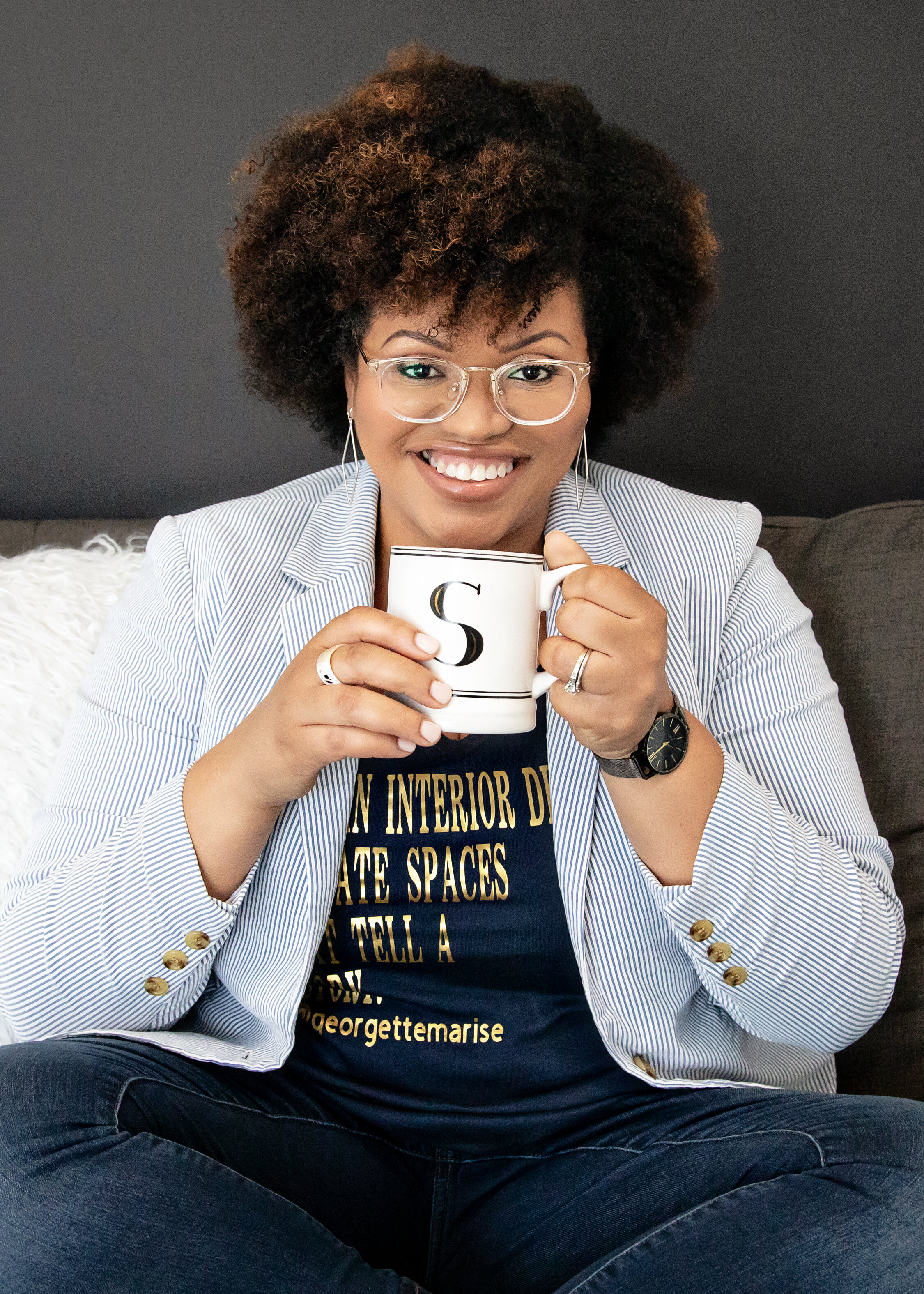Q & A: Understanding Color
/Understanding color
To better understand color in a space, you must first understand your relationship with color. For me, color has always been part of my surroundings. Being from a Caribbean family of Haitian descent, I have always had a love for color. Whether it was handmade Haitian wooden carvings stained in rich, dark tones or paintings of the Caribbean landscape hung on the walls — color, in my eyes, had a way of adding richness, depth, and life to the simplest things!
Today as an interior designer, I have a deep appreciation for color that goes deeper than what looks beautiful in a space. When dealing with color, I often think about how it makes one feel, think, and behave. I believe that color can evoke emotion and change the perception of a space or thing.
I recently asked a few friends, past clients, and various professionals about their relationship with color and how color affects their lives. I asked questions like, Do you like color? Are you scared of it or drawn to it? What is your favorite color and why? Is your current home decorated with color? The responses fascinated me. I spoke to one person who grew up with collections of art in their home and certain colors bring back memories for them. Most of who I spoke with were not scared or intimidated by it, they actually LOVED color! For some, colors like purple give energy and scream happiness, for others colors like teal gives a sense of calm while others love yellows and reds because it brings joy to life! However, what was interesting to me was that although they loved color and were not scared of it some of them did not decorate with it.
To dive even deeper I went to my friend and color expert Michele Charles Gustafson, BComm, CIC. Michele is a Certified Image Consultant, Color Expert, and International Confidence Coach. I first met Michele on my podcast Coffee n Tea with S & L, and I loved her perspective of color and her explanation of how each of us uses color differently.
Michele Charles Gustafson, BComm, CIC
Sabine: How can color specifically bring out one's personality?
Michele: Color is an element of personal, emotional expression. When done well, color doesn't bring out one's personality; it reflects its truth. Every color has an expression of a character value, aspiration, intent, and action. When one learns to read color in this way, they can match it to their environment from their homes to offices, wardrobes, and personal branding.
For example, blue isn’t just one blue. Teal, cobalt, cornflower, or cerulean all have distinct values, aspirations, intents, and influences to action. While general color psychology says blue is about trust, the difference in quality and characteristics of a blue will change it from calming trust to persuasive trust to connective trust -- all are different blues.
Sabine: Sometimes colors have the power to affect our mood. With so many options to choose from, how can we be intentional with our choice of color(s)?
Michele: A big question. Color ALWAYS affects mood. The best way to be intentional is to be aware that color is an art and a science. There is a reason why certain hues draw you in - most people don't know why, though.
The colors that make you feel comforted, at peace, or even powerful have characteristics in common. They are, though you may not be aware, usually fall into groups in your personalized color palette. Once you understand the particular color characteristic in common with the colors that catch your intuition, know that there are more than 30 other complementary hues that can give you new and exciting ways to express yourself. Each color coordinates seamlessly with each other, and all can move between your interior decorating, to your wardrobe, to your mobile phone case -- and with every detail, the expression will feel "like you."
“We are people. We have things to say with our lives, using color in a personal way can help us express it no matter how blank the canvas, the trends of the day, or the influences around us.”
—Michele Charles Gustafson
Sabine: Do you feel that it's important to balance color with neutrals?
Michele: Neutrals are a must to balance the intensity, activity, and emotional power of any hue, but know, that neutrals carry messages too. Every shade of grey doesn't mean the same thing; every tint of cream doesn't offer the same emotion. Combining hues and neutrals from a complementary color palette adds a fuller range of emotion and intention to any palette combination.
The color psychology of using all neutrals is limited, in my opinion. Even in a modern or minimalist aesthetic, there is always room for some tint, tone, or shade of a hue. We are people. We have things to say with our lives, using color in a personal way can help us express it no matter how blank the canvas, the trends of the day, or the influences around us.
Michele teaches entrepreneurs, professionals and community-builders to use her Hue and Style® process to turn how they show up into a permanent superpower for personal branding, visibility, and new success. Find her online and socialize with her on Instagram, Facebook, and Twitter. Share in the comments below your relationship with color.
À la prochaine,





























